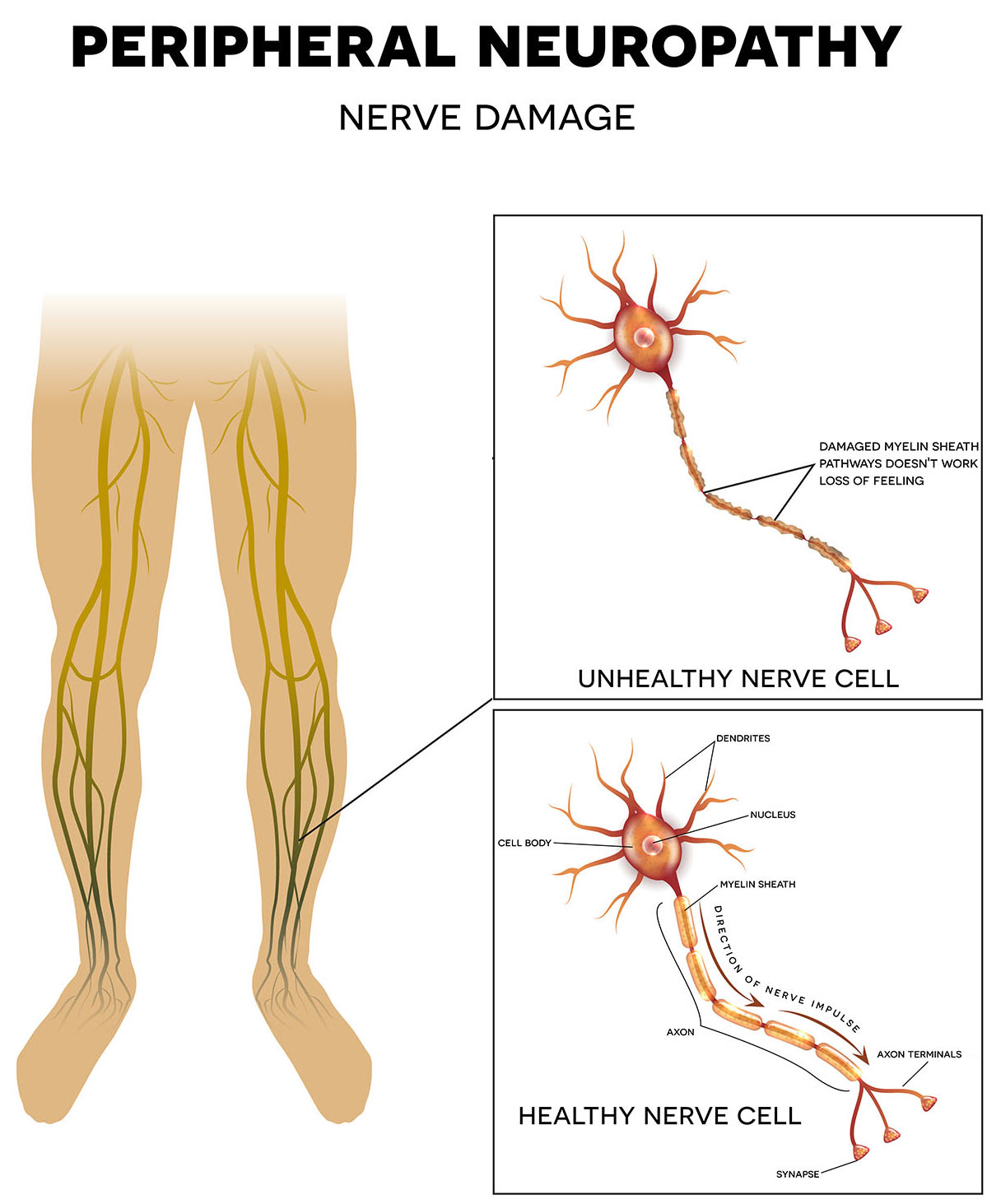Exploring Nerve Disorders: Categories and Treatment Options

Neuropathy is a term that refers to a variety of conditions involving injury to the peripheral nerves, which are essential for transmitting signals between the central nervous system and the other body parts. People who experience neuropathy often report symptoms such as tingling, lack of sensation, or discomfort in their extremities. This condition can have a variety of causes, including high blood sugar, infections, traumas, and contact to toxins, making it a complex health concern that affects countless of individuals worldwide.
Comprehending neuropathy is essential for effective management and treatment. It can appear in different forms, each posing unique issues and requiring tailored approaches to care. By analyzing the various forms of neuropathy and exploring the treatment options available, we can provide insight on how individuals can handle symptoms, enhance their quality of life, and strive for regaining function and relief in their daily lives.

Grasping Neuropathy
Peripheral neuropathy refers to a condition that affects the nerves outside the brain and spinal cord, which are tasked with transmitting signals between the brain and spinal cord and the remaining body. It can result in a variety of symptoms, including discomfort, pins and needles sensation, numbness, and muscle weakness. The disorder can be triggered by various factors such as diabetes, infections, traumatic injuries, and toxic substance exposure. Understanding neuropathy is crucial as it can considerably impact an person's life experience.
There are numerous types of peripheral nerve disorders, with neuropathy related to diabetes being one of the most common. This form is primarily linked to long-term issues of the diabetic condition, where elevated glucose levels can injure the neural pathways as time goes on. Additional forms include neuropathy affecting the limbs, which impacts the limbs, and neuropathy impacting involuntary functions, which influences automated body processes like cardiac function and digestive processes. Every form can pose unique difficulties and requires customized approaches for treatment.
Therapeutic choices for neuropathy differ based on the root issue and intensity of the symptoms. They may include medications to manage pain, changes in daily habits to enhance overall health, and therapies aimed at improving nerve health. In some situations, addressing the underlying issue, such as regulating glucose levels in diabetic patients, can result in notable benefits. It is essential for individuals who have symptoms to seek medical advice for correct evaluation and management.
Categories of Neuropathy
Neuropathy can be classified into various types based on the underlying cause and the particular nerves affected. One of the most common forms is neuropathy related to diabetes, which occurs as a complication of the diabetic condition. Elevated blood sugar levels over time can harm the nerve system, particularly in the lower limbs and toes, leading to symptoms such as discomfort, numbness, and numbness. Proper management of blood sugar levels is essential in avoiding and treating this form of nerve damage.
Another, significant type is peripheral neuropathy, which involves damage to the outer nervous system pathways that carry signals between the brain, spinal cord, and the rest of the body. This can be caused by a range of factors, including infections, medications, and exposure to toxins. Symptoms can differ widely and may include weakness, hypersensitivity to touch, and difficulty in coordination. Determining the underlying cause is crucial for correct treatment.
There is additionally a category of neuropathy known as localized neuropathy, which is characterized by rapid onset and affects specific areas of the body. It usually leads to weakness or pain in a specific nerve, such as carpal tunnel syndrome affecting the wrist. Focal neuropathy often recovers on its own, but in some cases, targeted therapies may be necessary to relieve symptoms and regain function.
Therapy Choices
Efficient therapy for neuropathy usually requires a multidisciplinary strategy, adapted to the patient based on the root cause and particular symptoms. peripheral neuropathy treatment centers play a crucial role, including OTC pain relievers for slight discomfort and prescription drugs like anti-seizure medications and antidepressants, which have been proven to help with nerve pain. Topical treatments, such as capsaicin or lidocaine, can additionally provide localized relief for some patients.
In addition to medication, daily modifications are crucial in treating neuropathy. Regular physical activity can enhance blood flow and alleviate symptoms, while a nutritious eating plan filled in vitamins and minerals is essential for nerve health. Managing underlying conditions, such as high blood sugar, is key, as managing blood sugar levels can prevent further nerve damage. Alternative therapies, like needle therapy and rehabilitation, may additionally offer benefits and enhance overall well-being.
Finally, in advanced cases of neuropathy, other measures might be necessary. This can include procedural procedures, such as nerve block injections or spinal stimulation, to control pain. Some patients may profit from dietary supplements, like alpha-lipoic acid or B12 vitamins, although it is important to consult with a healthcare professional before starting any new routine. Overall, a combination of these treatment approaches can help improve the quality of life for those living with neuropathy.
